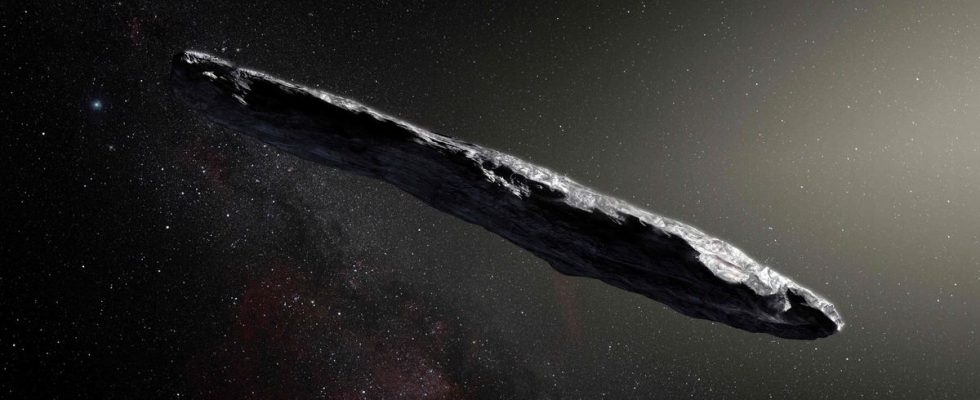A new mystery solved? The passage of a bolide in our solar system in 2017 had disconcerted astrophysicists, one of them going so far as to see extraterrestrial technology there. A study published Wednesday in the journal Nature offers a “non-alien” explanation for the exotic visit. Spotted by a telescope in Hawaii, Oumuamua, which means “scout” in Hawaiian, was traveling at such high speed that it could only come from, and this was a first, another star system.
The discovery has the astronomical community in turmoil, who have long searched for comet-like objects entering our solar system from the vastness of space. Except that Oumuamua did not look like the usual comets: it did not have that characteristic hair formed by their immense halo of gas and dust when approaching the Sun.
Series of theories
The interstellar visitor, which measured about 100 m wide, was also distinguished by its brilliance and a large variation in brightness, giving the impression of a metallic object turning on itself. But stranger still, after circling the Sun, Oumuamua accelerated and veered off course, propelled by a mysterious force that ejected it from the solar system.
Scientists were left stunned, ending up with four months of incomplete and seemingly contradictory data that they tried to figure out. This gave rise to a whole series of theories. Some “were beyond the imagination,” said Jennifer Bergner, astrochemist at the University of California at Berkeley, co-author of the study published in AFP. Nature. Avi Loeb, director of the astronomy department at Harvard University, had argued that the most believable scenario was that Oumuamua was an alien craft. A controversial thesis, which he defended in 2021 in his book The first sign of extraterrestrial intelligent life.
According to Jennifer Bergner’s explanation, whatever the origin of Oumuamua, it is a water-rich, comet-like object. During its journey through interstellar space, it was subjected to cosmic rays which bombarded the water releasing hydrogen, which became trapped in the body of the object. As the bolide approached the Sun, the heat in turn released the trapped hydrogen, acting as a “thruster” that sent it on an unexpected course. “Trapped hydrogen is simply the most generic explanation”, develops in a press release Darryl Seligman, from Cornell University and co-author of the study.
Scientists Debate
Asked by AFP about the study of Nature, the astrophysicist says that saying a comet has no tail is “like saying an elephant is a zebra without stripes.” He recalls that comet 2I/Borisov, the second visitor from outside the solar system spotted in 2019, had a long hair of dust. Response from Jennifer Bergner: If Oumuamua has no tail, it is probably because it is much smaller than all comets observed so far, including 2I/Borisov.
The situation could soon change. Observations from the Vera-C.-Rubin telescope in Chile, which will begin in 2025, are expected to detect many new comets, inside and outside the solar system. If the smaller ones show signs of releasing trapped hydrogen and don’t have a tail, like Oumuamua, that would confirm the theory, the astrochemist added.
As for the possibility of extraterrestrial intelligent life, “everything depends on the level of proof required” to invoke it, comments the scientist. “We will never know for sure what Oumuamua was – we lost our chance. But for now, I think we provide a compelling non-extraterrestrial explanation,” she concludes.

